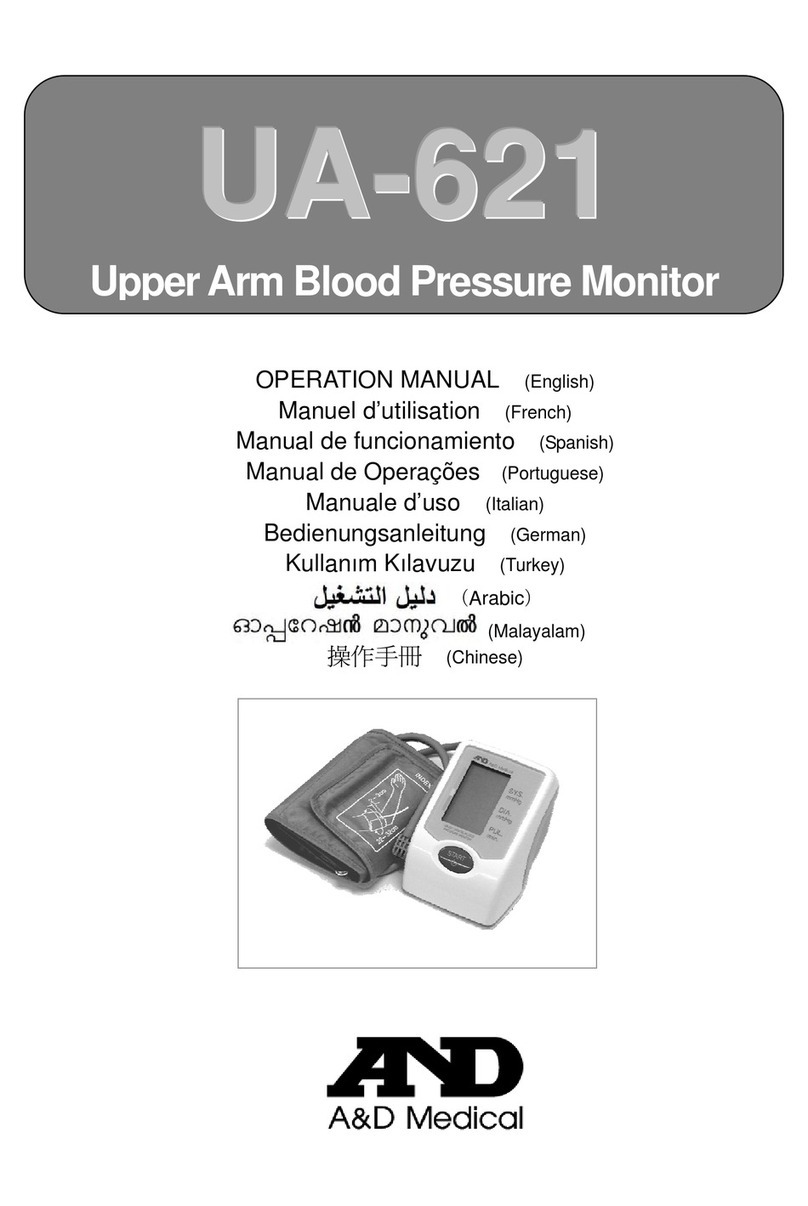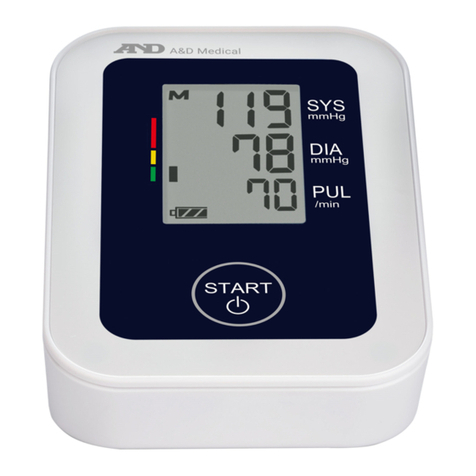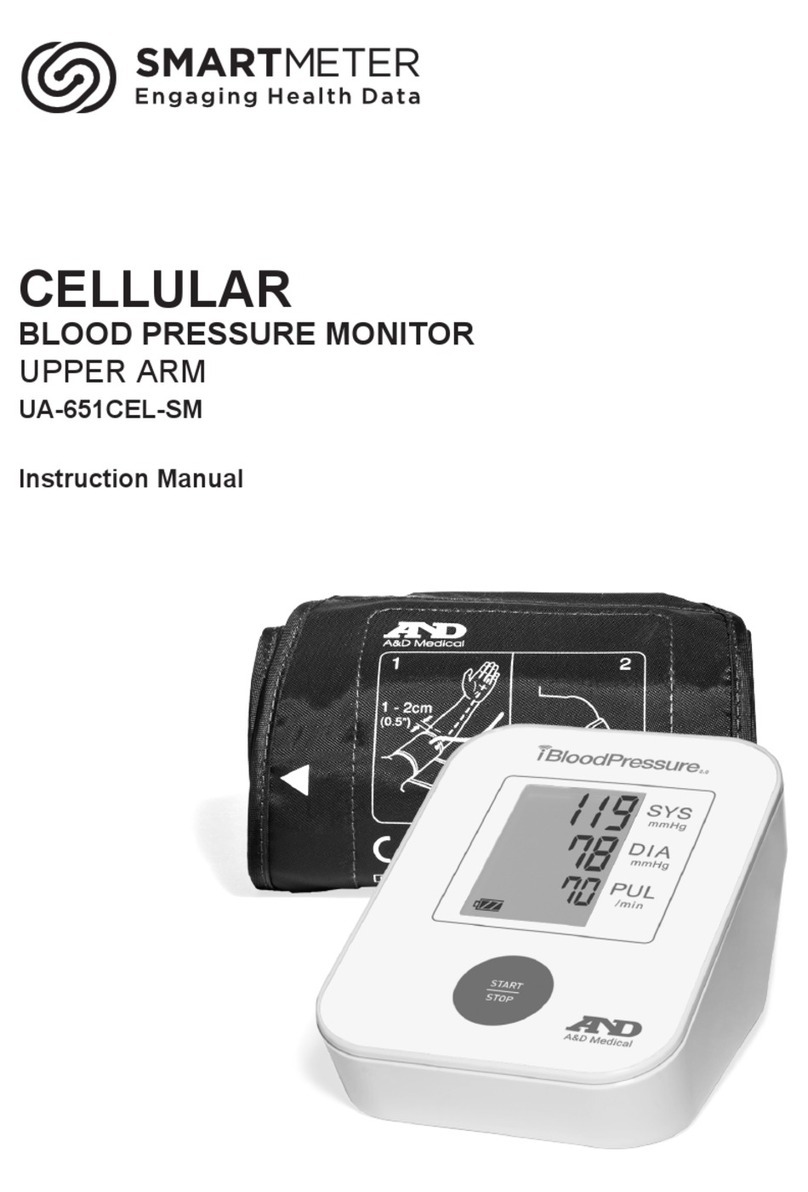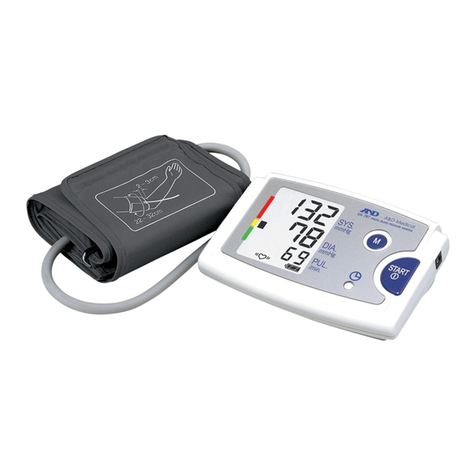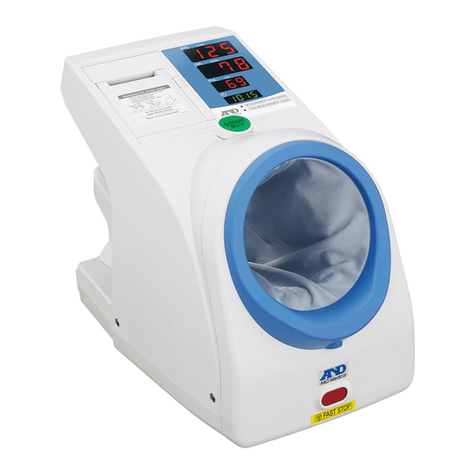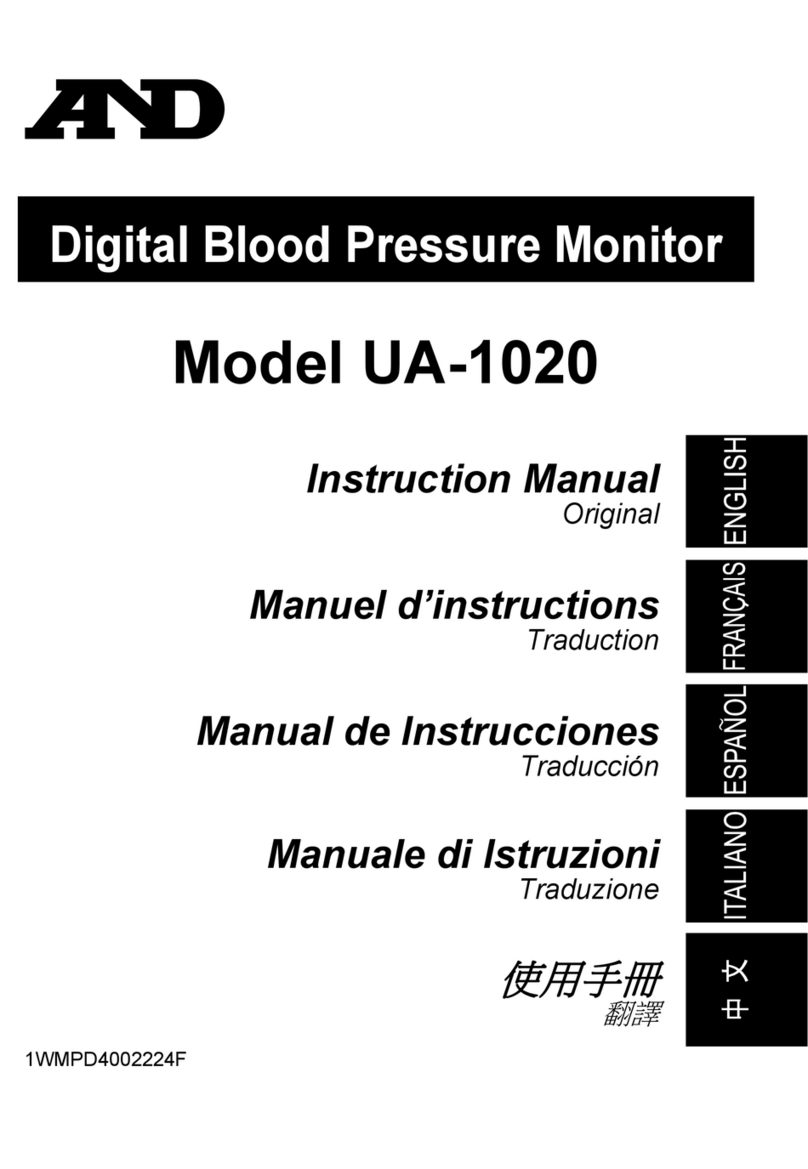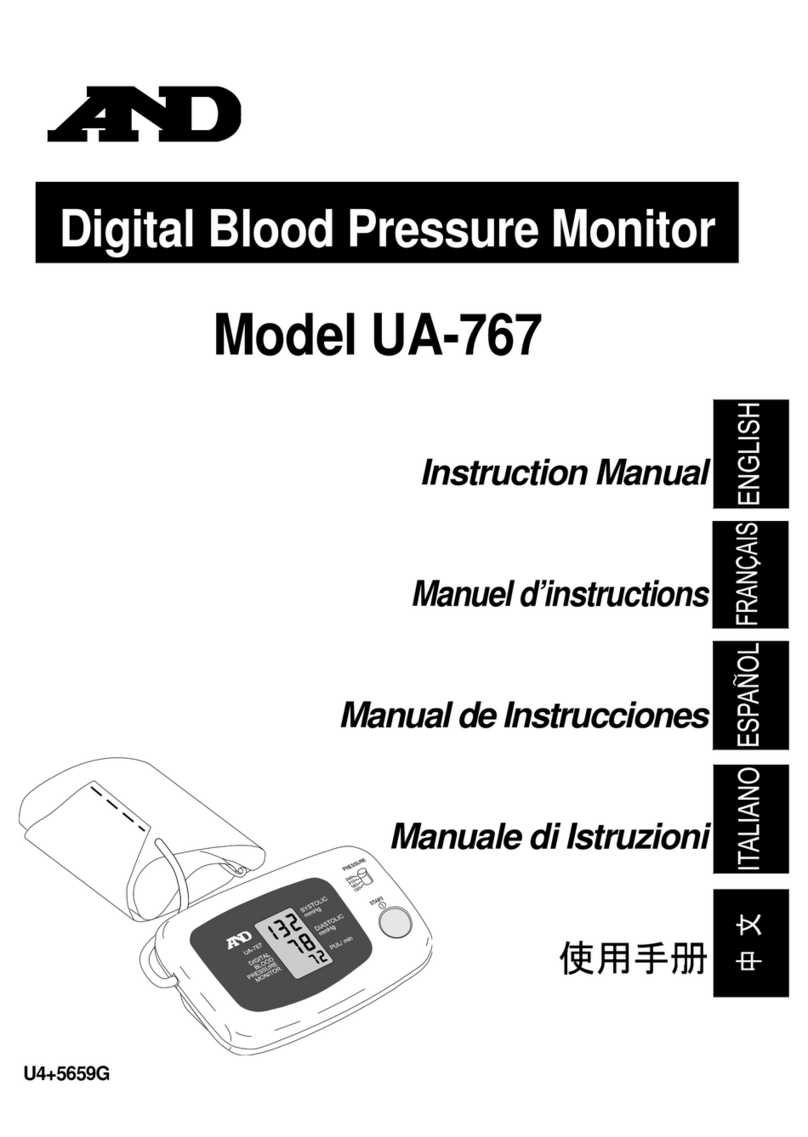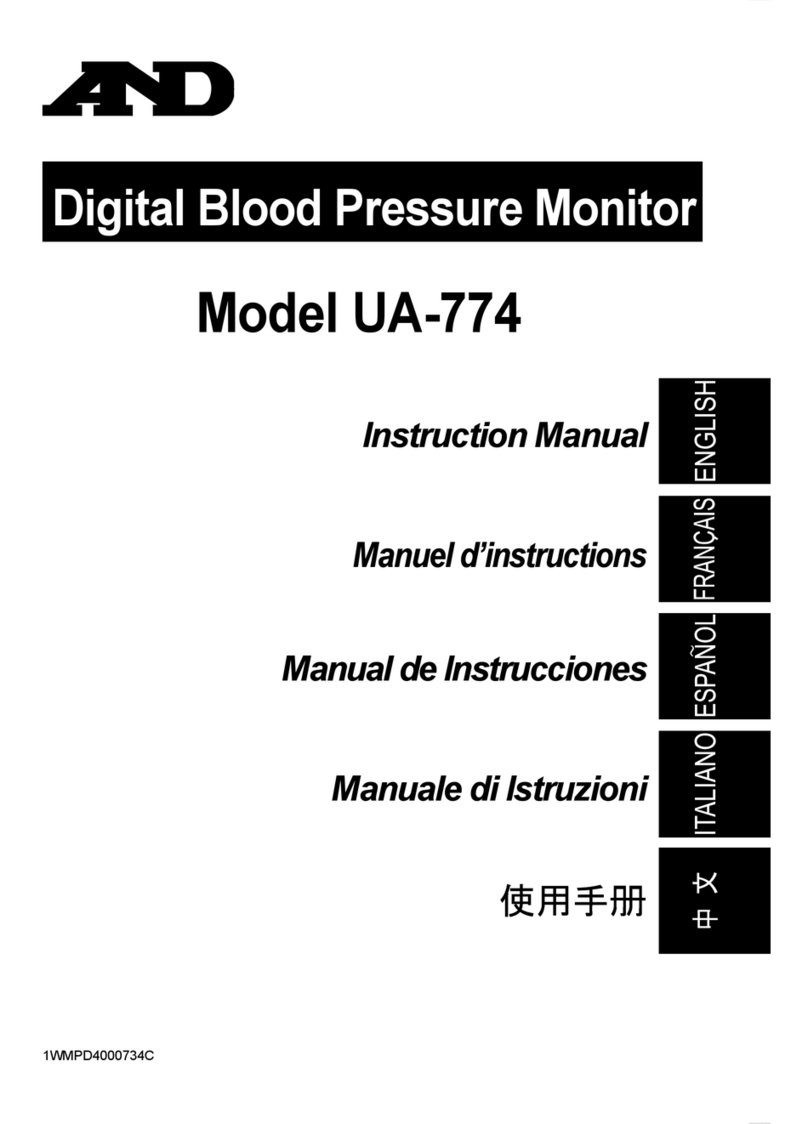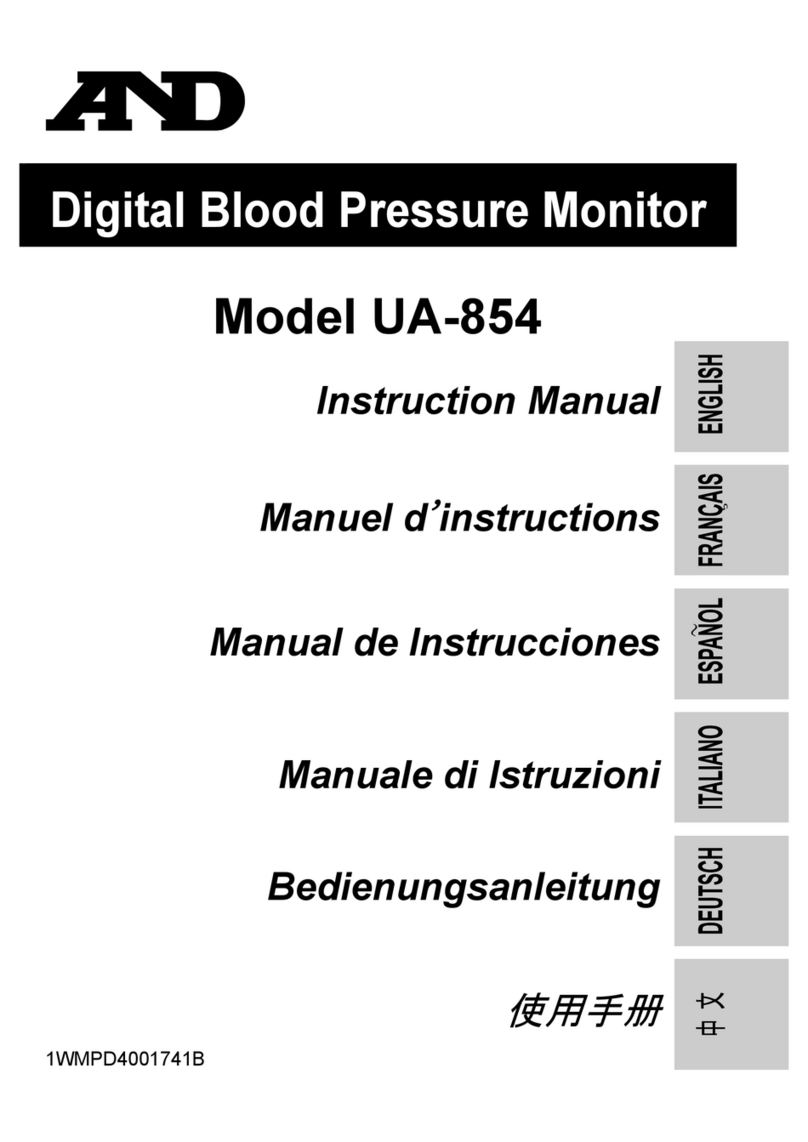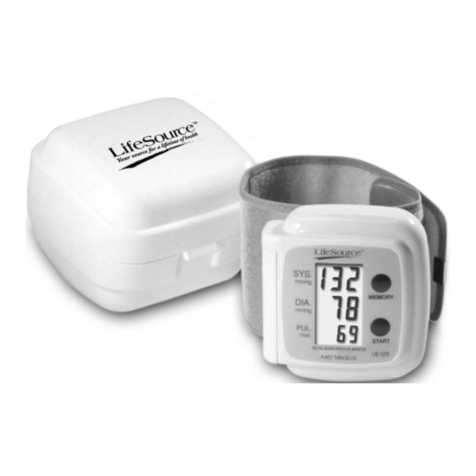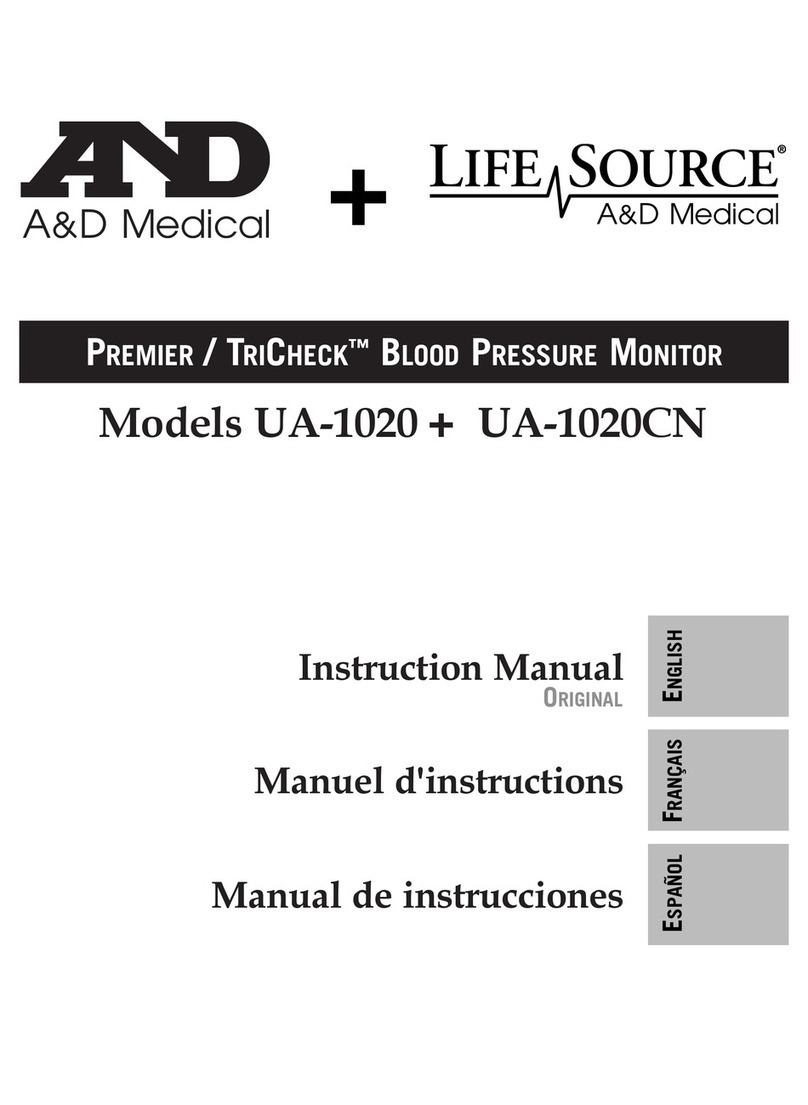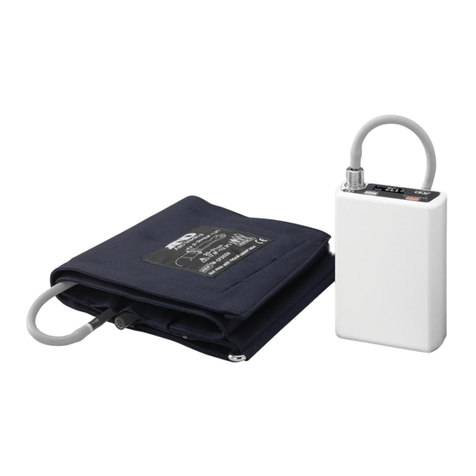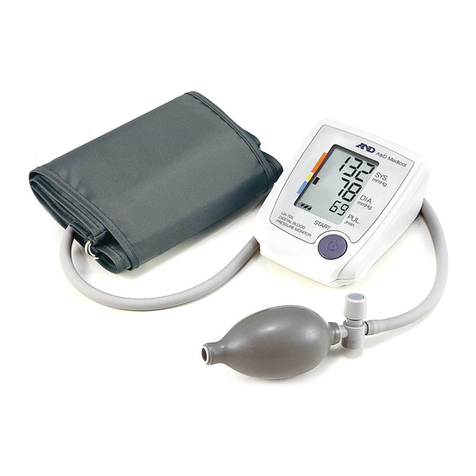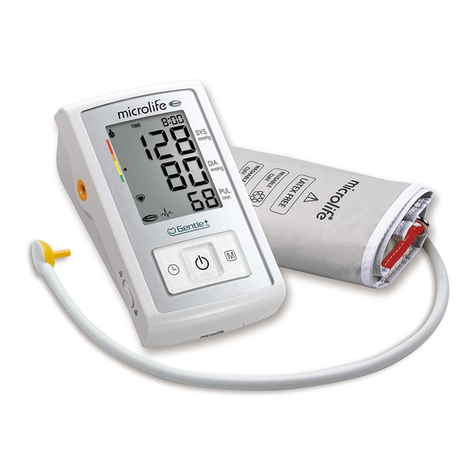
• When reusing the device, conrm that the device is clean.
• Do not modify the device. It may cause accidents or damage to the device.
• To measure blood pressure, the wrist must be squeezed by the cuff hard enough to temporarily
stop blood ow through the artery. This may cause pain, numbness or a temporary red mark to the
wrist. This condition will appear especially when measurement is repeated successively. Any pain,
numbness, or red marks will disappear with time.
• Wireless communication device, such as home networking devices, mobile phones, cordless phones
and their base stations, walkie-talkies can affect this blood pressure monitor. Therefore, a minimum
distance of 0.3 meters should be kept from such devices.
• Measuring blood pressure too frequently may cause harm due to blood ow interference. Check that
the operation of the device does not result in prolonged impairment of blood circulation, when using the
device repeatedly.
• Clinical testing has not been conducted on newborn infants and pregnant woman. Do not use on
newborn infants or pregnant woman.
• If you have had a mastectomy, please consult a doctor before using the device.
• Do not let children use the device by themselves and do not use the device in a place within the reach
of infants. It may cause accidents or damage.
• There are small parts that may cause a choking hazard if swallowed by mistake by infants.
• Do not touch the batteries and the patient at the same time. That may result in electrical shock.
• In the case of single components failure enclosure of near cuff may become hot and potentially cause
malfunction.
Precautions
